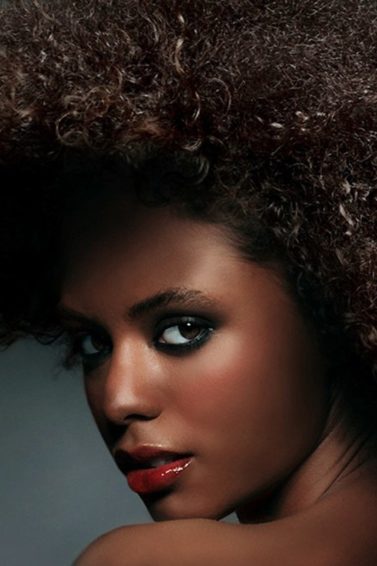
Natural Hair Tips: Caring for the Crochet Twist and Other Protective Styles with Daven Mayeda
A renowned pro stylist gives us tips on how to have fun with your crochet twists.
With so many twisted styles out there, it’s easy to get confused with the specific hair care requirements for each. Hairstyles like the crochet twist, Marley twist and box braids all have their own pros and cons. They also provide highly nuanced looks, depending on personal taste and commitment level, so much so that’s it’s not unusual for beginners to get the details a bit mixed up.
To help shed light on the detailed difference of looks between crochet twists and other protective hairstyles, we sat down with renowned Honey Artists Hairstylist Daven Mayeda. Read on for his expert take, as well as some choice pro tips on protective and natural hair care:
From the Pros: Caring for Natural Hair, Crochet Twist Hair and Other Protective Styles

All Things Hair: Hi Daven! Can you tell us a bit about protective twists? What’s the main difference between crochet twists/crochet twist braids, Marley twists and Nubian twists?
Daven Mayeda, Honey Artists: Twists are a great way to protect your hair [from damage] and also give you great style. There are several different types of twists that will give you show-stopping hair: crochet, Marley and Nubian twists.
Crochet twists are achieved by using pretwisted locks that are latch-hooked into cornrows at the scalp. They are different than Marley twists because they are premade, [and are] very easy to install and take out. They look similar in appearance to Marley twists, but the advantage of Marley twists is that an array of colors can be used and blended, because you are creating the twist on loose sections of Marley hair rather than premade twists, then attaching them at the root. The disadvantage is that is takes twice as long to install.
Nubian twists are a much tighter twist look, with the tendrils much skinnier in diameter than Marley and crochet twists.

All Things Hair: What’s the best way to take care of each kind of twist hairstyle? And how often should one wash hair with a protective hairstyle?
Daven Mayeda: With all protective hairstyles, the hair is often very dry. Moisturize your hair as much as possible and only shampoo when absolutely necessary. When washing hair, let it air-dry to prevent heat damage. Try using a restoring conditioner (Ed’s note: We love Suave Professionals Moisture Mask with Almond & Shea Butter) to moisturize your hair regularly. Sleep with a satin scarf as well to protect the roots and edges, and to keep your style in place.
All Things Hair: Awesome. What are some fun looks that one can try with a protective hairstyle?
Daven Mayeda: Try creating big, voluminous shapes by grabbing multiple twists and tying them into loose knots at the scalp. You can also put all of your locks into a high bun and ponytail. Endless possibilities! Half-up, half-down looks work great with protective hairstyles as well. If you’re feeling funky, try pinning the sides back and leaving the top out for a mohawk-type shape.
Want more crochet twist inspiration and other styles you can do with protective twists? Check out our ultimate guide to the two-strand twist.

